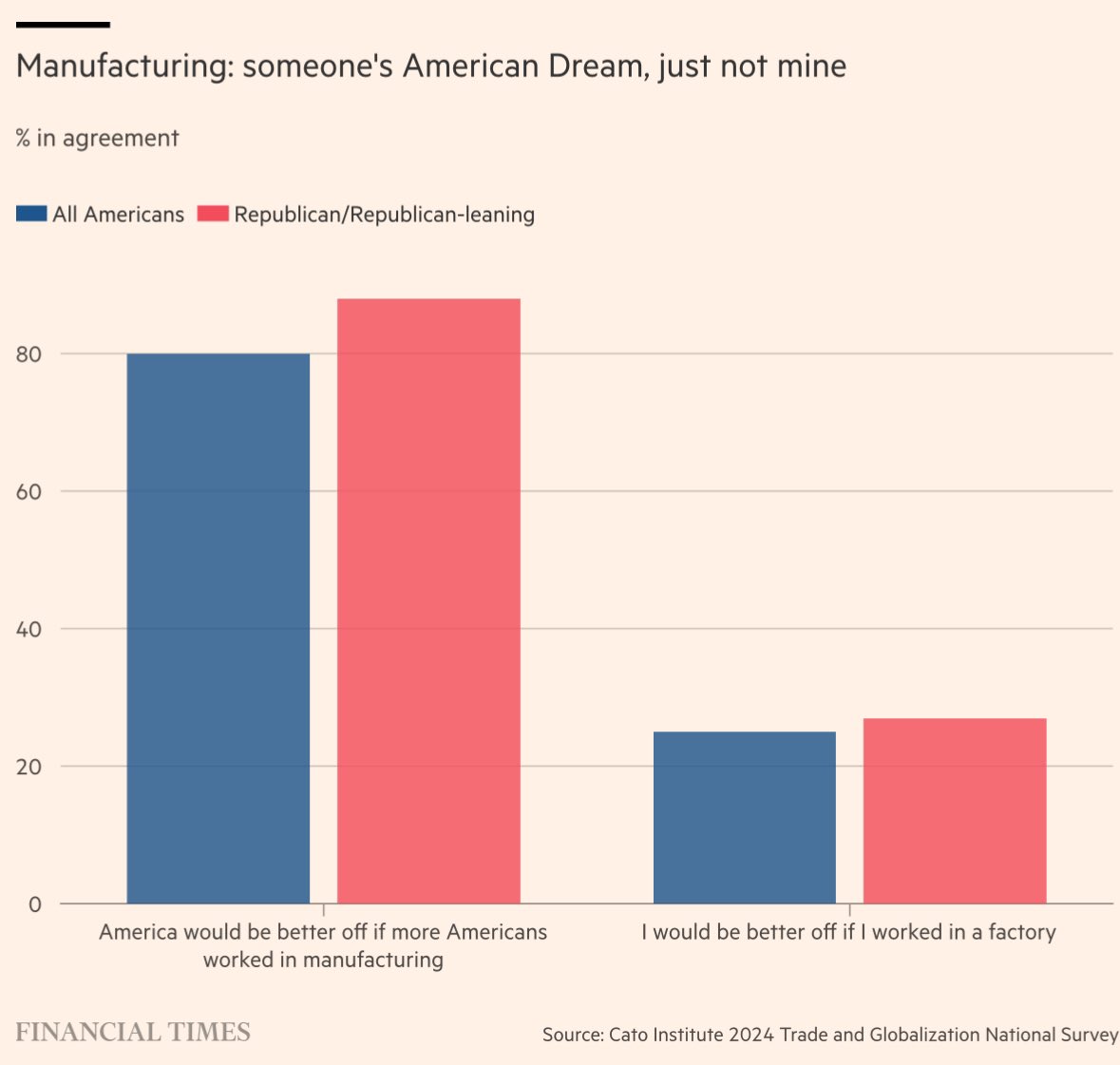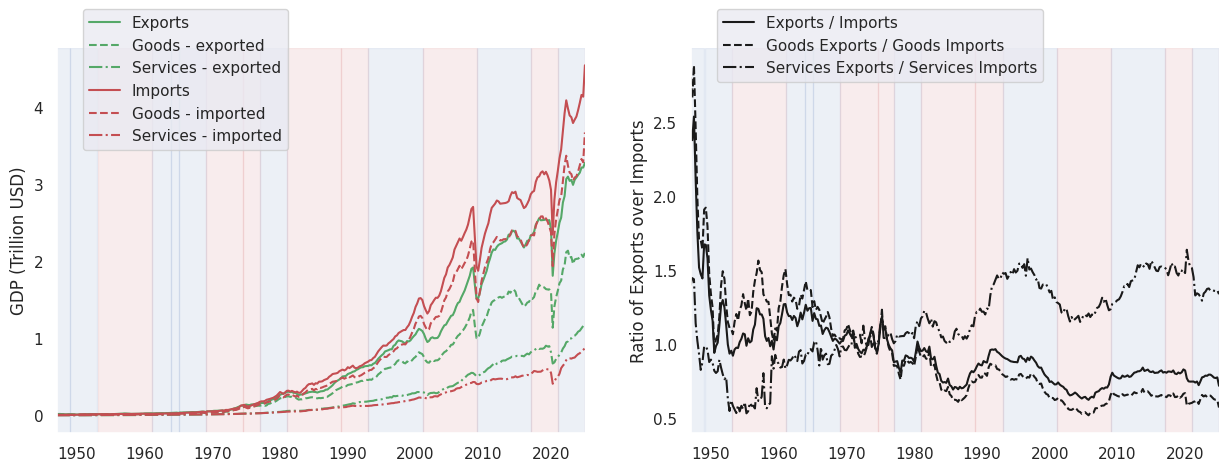GDP & tariff analysis
Published on Apr 15, 2025
Last updated on Jun 15, 2025
Introduction
Paul Krugman, the economics legend who wrote the books that introduced me to economics, published a pair of raw smackdowns of the Trump tariffs last week:
- The Trump Tariffs Just Got Even Worse; Higher costs, uncertainty and crony capitalism, oh my
- Democrats Shouldn’t Support Tariffs; Don’t get sucked in by Trump’s revenge mania
The first of the posts, from April 13, has a central message of:
What you need to know is that it [Trump's about face on April 12, 2025 to exempt electronics from his blanket tariffs] does not represent a move toward sanity.
Electronics power the core of what the US sells. They power our homes, cars, offices, and increasingly intelligence generation itself. The fact that the United States designs electronics and other places tend to produce them enables an important reality for the US - one the the Trump tariff designers seem unaware of - that the US is a services-based economy.
We are not, and do not want to be, competitive at “screwing in millions of screws”, no matter what Americans think other Americans should be doing with their careers.

Updates [June 15]
I had a little problem with Tim Cook. I said to him, 'Tim, you're my friend. I treated you very good. You're coming in with $500 billion.' But now I hear you're building all over India. I don't want you building in India.
- The World Bank has slashed U.S. GDP growth forecasts from 2.8% in 2024 to just 1.4% in 2025 — largely attributable to Trump’s tariff regime. The OECD concurs, projecting similar slowdown to 1.6%.
- U.S. GDP growth dropped nearly in half from 2.8% actual growth in 2024 to forecasted 1.4%-1.6% in 2025, with both the World Bank and OECD attributing the decline primarily to tariff-induced economic drag.
- $3,800 annual burden per household.
- Import volumes surged 50% in Q1 2025 as companies front-loaded purchases: laptops and desktops led with +50% increases, smartphones up 35%, and other electronics +25% compared to Q4 2024 baseline levels.
- the WTO warns that U.S. trade barriers will flip global goods trade growth from +2.7% to -0.2% in 2025, potentially hitting -1.5% under worst-case scenarios.
- Apple shifted 97% of US-bound iPhone production from China to India to dodge China-specific tariffs - a massive logistical undertaking. But Trump’s subsequent threat of 25% tariffs on India-made iPhones shows how these policies create a never-ending game of whack-a-mole.
- Moving iPhone assembly to the U.S. would triple device costs. That’s not just bad for Apple or consumers - it misunderstands where American economic value actually gets created. We design the best devices, we write much of the software, we handle the marketing and distribution. The assembly? That’s the low-margin, labor-intensive part that other countries can do more efficiently. That can be true and USA should absolutely do manufacturing domestically for security and advanced engineering projects.
References and todo
How much of this is about Apple? Times of India, Ars technica
When I revisit this I’ll try summarizing these metrics in updates:
- Q2 2025: Tariff revenue vs. economic drag, inflation trends in tech goods
- Q3 2025: Corporate earnings in electronics, supply chain adaptation patterns
- Q4 2025: Employment shifts, consumer spending power, any policy reversals

